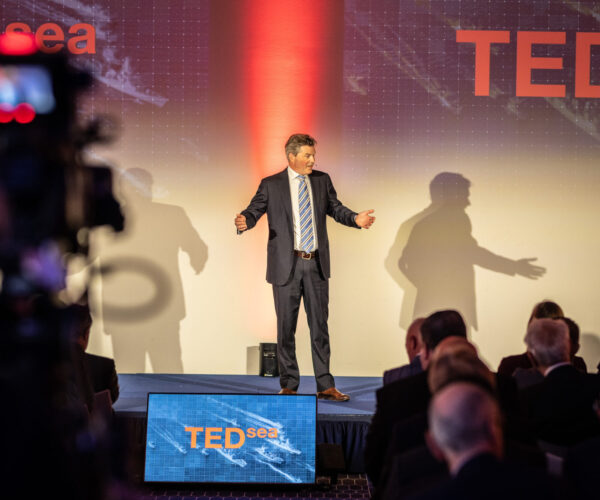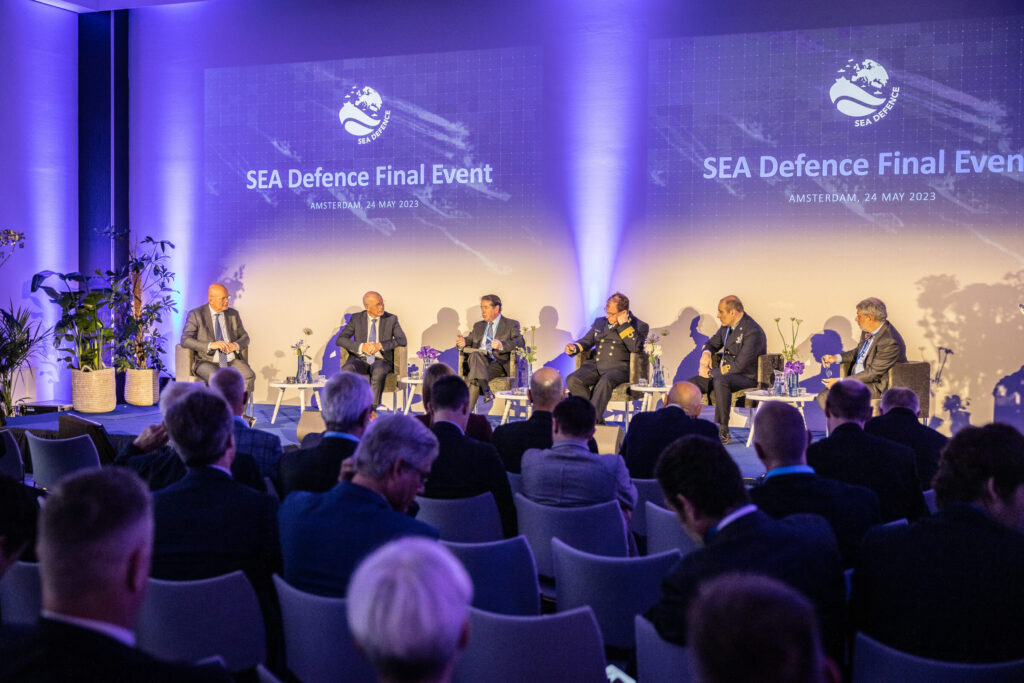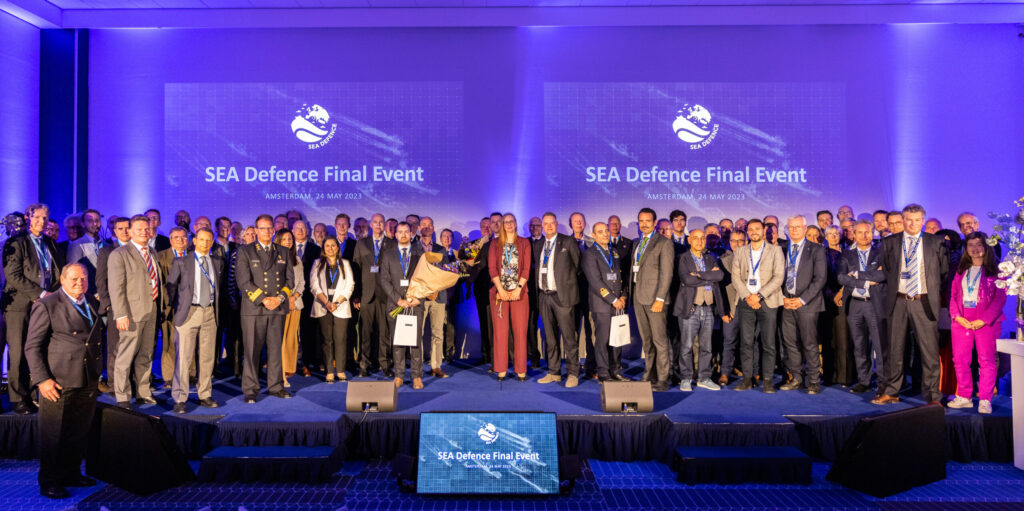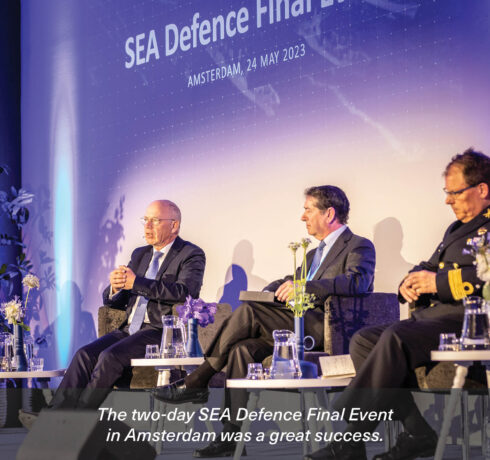The SEA Defence project has come to its conclusion. On 24 May 2023, the project’s participants met at a Damen Naval-organised ‘Final Event’ in Amsterdam. This was a two-day meeting where the stakeholders gathered to look back over how the project had impacted collaboration within the European naval defence sector, and to look ahead to the future.
A quick recap: SEA Defence is a 30-month long European feasibility project that was launched in December 2020. It is a European Defence Industrial Development Programme, coordinated by Damen Naval, as part of the EU’s strategy to strengthen the European defence technological and industrial industries. The project brought together twelve partners and seven Ministries of Defence from eight countries. This included Damen Naval (The Netherlands), Fincantieri (Italy), Naval Group (France), Navantia (Spain), SAAB Kockums (Sweden), and Lürssen Defence and thyssenkrupp Marine Systems (Germany). Other stakeholders are Atlas Elektronik, Blohm+Voss, Cetena, CTN, Naviris, MARIN, OMT, SAES, Sirehna Naval Group, Sea Europe, and TNO.
 Damen Naval Project Manager Marcel Elenbaas on stage during the Final Event.
Damen Naval Project Manager Marcel Elenbaas on stage during the Final Event.
While the initial aim of the project concentrated on developing a roadmap of seven key areas of technology in a spirit of European collaboration, subsequent geopolitical events shifted priorities. Damen Naval Project Manager Marcel Elenbaas explains: “Ukraine happened. This definitely increased the sense of urgency of the need to work together. The whole of Europe was looking for increased collaboration.” To that end, the SEA Defence project has served as a valuable catalyst to progressive and productive communication between project participants.
“This was basically the outcome of the project,” continues Marcel, “not only identifying technologies, but also identifying ambitions. In the details, these ambitions might seem to be different, but looked at as a whole, we [the project partners] all have the same ambitions, which ultimately lead to the principle goal of naval superiority. The seven roadmaps are the building blocks to achieve this overarching goal.”
"Partly as a result of the increased cooperation and collaboration shown by the SEA Defence project, the European Defence Fund budget for the naval domain has increased from ten per cent to 20 per cent of total budget.” Marcel Elenbaas
The roadmaps that Marcel is referring to are the seven areas of technology that the project has focused its efforts on over its 30-month duration: Integrated Mission Management, Unmanned Vehicles, Energy Management, Modularity & Adaptability, Crew Performance And Automation, A System Of Systems Fleet Approach, and Integral Survivability.
“All seven of these subjects are relevant to us and for our main customer, the Royal Netherlands Navy,” says Marcel, while highlighting the commercial significance of SEA Defence to Damen Naval (and also to the readers of the Schelde Schakels). “This is the commercial value of the SEA Defence project. It demonstrates our ‘integrator role’, showing that we are the only OEM in the Netherlands that can provide the complete naval solution for our clients. And it really helps in our objective of increased collaboration with our clients – especially the Royal Netherlands Navy – to develop new innovations and products.”
 Part of the programme included a panel discussion with key stakeholders.
Part of the programme included a panel discussion with key stakeholders.
Damen Naval’s coordination of the entire SEA Defence project is worthy of another mention. “We had the unique position of leading this whole process – in fact it was an honour for us – which meant that we could assure that our national objectives were aligned as well as reaching out to all partners to see which objectives they have. This coordination role has involved the efforts of many people within Damen Naval, all of whom deserve special thanks. Colleagues to thank range from the technical specialists involved in each of the technical work packages up to full support received from the management. Specifically for the final event, the support from our PR department with Marloes Goethals as event manager contributed in celebrating the success with our stakeholders.”
The fact that the SEA Defence project has held this so-called ‘Final Event’ does not mean that this is the end of European naval cooperation. On the contrary, “due to the speed of ongoing developments, we have already started work on the following projects” notes Marcel. “In fact, partly as a result of the increased cooperation and collaboration shown by the SEA Defence project, the European Defence Fund budget for the naval domain has increased from ten per cent to 20 per cent of total budget.”
A video summary of the final event can be viewed here.
 The event ended with an impromptu group photo of all participants.
The event ended with an impromptu group photo of all participants.

